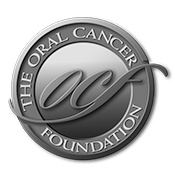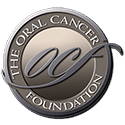Rates of occurrence in the United States
Close to 58,500 Americans will be diagnosed with oral or oropharyngeal cancer this year. It will cause over 12,250 deaths, killing roughly 1 person per hour, 24 hours per day. Of those 58,500 newly diagnosed individuals, only slightly more than half will be alive in 5 years. (Approximately 57%) This is a number that has not significantly improved in decades. (The survival number at five years from diagnosis was, for many decades, about 50%, so 57% is an improvement over the last ten years. However, this is due to the increase of HPV16-caused cancers, which are more vulnerable to existing treatment modalities, conferring a significant survival advantage. So a change in the etiology, not improved early discovery or treatments; which are relatively unchanged from a decade ago, are not the primary cause for improvement.) The death rate for oral cancer is higher than that of cancers that we hear about routinely, such as cervical cancer, Hodgkin’s lymphoma, laryngeal cancer, cancer of the testes, and many others. If you expand the definition of oral and oropharyngeal cancers to include cancer of the larynx, the numbers of diagnosed cases grow to approximately 58,500 individuals and 13,500 deaths per year in the U.S. alone. Worldwide, the problem is much greater, with over 450,000 new cases being found each year. Note that the world incidence numbers from the WHO, while the best available, are estimates that users should consider with caveats. Data collection and reporting in some countries is problematic despite the professional efforts of the WHO to be accurate.
Statistics on worldwide occurrence
Oral cancers are part of a group of cancers commonly referred to as head and neck cancers, and of all head and neck cancers, they comprise about 85% of that category. Brain cancer, auditory and ocular cancers, and thyroid cancer (an endocrine system cancer) are cancer categories of their own and are not included in the head and neck cancer group as identified by the National Cancer Institute (NCI).
Historically the death rate associated with this cancer is particularly high not because it is hard to discover or diagnose, but due to the cancer being routinely discovered late in its development. Today (2022), that statement is still true, as there is no comprehensive program in the US to screen for the disease opportunistically, and without that, late-stage discovery is more common. Another obstacle to early discovery (and resulting in better outcomes) is the advent of a virus, HPV16, contributing more to the incidence rate of oral cancers, particularly in the posterior part of the mouth (the oropharynx, the tonsils, the base of the tongue areas) which many times does not produce visible lesions or discolorations that have historically been the early warning signs of the disease process in the anterior (front) of the mouth. There are, however, clues to its existence that can be discovered in an oral history verbal question and answer exam.
Often, oral cancer is only discovered when it has metastasized to another location, most likely the lymph nodes of the neck. The prognosis at this stage of discovery is significantly worse than when it is caught in a localized intraoral area. Besides the metastasis, the primary tumor has had time to invade deep into local structures at these later stages.
Oral cancer is hazardous because, in its early stages, it may not be noticed by the patient, as it can frequently prosper without producing pain or symptoms they might readily recognize, and because it has a high risk of producing second primary tumors. This means that patients who survive a first encounter with the disease, have up to 20 times higher risk of developing second cancer. This heightened risk factor can last 5 to 10 years after the first occurrence. There are several types of oral cancers, but around 90% are squamous cell carcinomas. The other far less common oral cancers are ACC and MEC cancers, which by comparison are relatively rare but highly deadly as the depth of knowledge about them is far less than SCC. It is estimated that approximately $4.5 billion is spent in the United States each year on the treatment of head and neck cancers. (2020 numbers)
More information on rare oral cancers.
Age, gender, race, and ethnicity
 The demographics of those who develop this cancer have been consistent for some time. While historically, most people were over 40 at the time of discovery, it is now occurring more frequently in those under this age. The exact causes of those affected at a younger age are becoming more apparent in peer-reviewed research, revealing a viral etiology (cause), the human papillomavirus version 16. There are also links to young men and women who use conventional “smokeless” chewing or spit tobacco. Promoted by some as a safer alternative to smoking, it has, in actuality, not proven to be significantly safer to those who use it when referring to oral cancers. Campaigns to promote the safety of smokeless are being initiated, but it is clear that while it may reduce lung cancers, it has a negative effect on the rates of oral cancers, pancreatic cancer, periodontal disease, and the chronic infections that it produces may even link it to heart disease as well. The gains against lung cancers may occur, but there will be new losses in other areas. The jury is out on other new smokeless tobacco dissolvable products, and until there is acceptable research behind their use, we recommend avoiding them.
The demographics of those who develop this cancer have been consistent for some time. While historically, most people were over 40 at the time of discovery, it is now occurring more frequently in those under this age. The exact causes of those affected at a younger age are becoming more apparent in peer-reviewed research, revealing a viral etiology (cause), the human papillomavirus version 16. There are also links to young men and women who use conventional “smokeless” chewing or spit tobacco. Promoted by some as a safer alternative to smoking, it has, in actuality, not proven to be significantly safer to those who use it when referring to oral cancers. Campaigns to promote the safety of smokeless are being initiated, but it is clear that while it may reduce lung cancers, it has a negative effect on the rates of oral cancers, pancreatic cancer, periodontal disease, and the chronic infections that it produces may even link it to heart disease as well. The gains against lung cancers may occur, but there will be new losses in other areas. The jury is out on other new smokeless tobacco dissolvable products, and until there is acceptable research behind their use, we recommend avoiding them.
It is also now confirmed that a younger age group, including those who have never used any tobacco products, has a cause that is HPV16 viral based. The human papillomavirus, particularly version 16, has now been shown to be sexually transmitted between partners and is conclusively implicated in the increasing incidence of young, non-smoking oropharyngeal cancer patients. This is the same virus that is the causative agent, along with other versions of the virus, in more than 90% of all cervical cancers. It is the foundation’s belief, based on recent revelations in peer-reviewed published data in the last few years, that in people under the age of 50, HPV16 may even be replacing tobacco as the primary causative agent in the initiation of the disease process in the posterior oral cavity/oropharynx, predominantly in the tonsil and on the base of the tongue.
From a gender perspective, for decades, oral cancer has affected 6 men for every woman. That ratio has now become two men to each woman in anterior of the mouth disease. Again, while published studies do not exist to draw finite conclusions, we will probably find that this increase is due to lifestyle changes, primarily the increased number of women smokers over the last few decades. It is cancer that occurs twice as often in the black population as in whites, and survival statistics for blacks over five years are also poorer at 33%, versus 55% for whites. As in the above examples, we will unlikely find a genetic reason for this. Lifestyle choices still remain the biggest cause. These published statistics do not consider such socio-economic factors as income levels, education, availability of proper health care, and the increased use of both tobacco and alcohol by different ethnic populations, but all these factors likely play a role in who develops the disease. In oropharyngeal cancers, the disease is dominated by males 4-1 over women and white males over black males.
Risk Factors
Understanding the causative factors of cancer will contribute to the prevention of the disease. Age is frequently named as a risk factor for oral cancer, as historically it occurs in those over the age of 40. The age of diagnosed patients may indicate a time component in the biochemical or biophysical processes of aging cells that allows malignant transformation. Alternatively, immune system competence diminishes with age. Very recent data (late 2008-2011) lead us to believe that the fastest-growing segment of the oral cancer population is non-smokers under the age of fifty, which would indicate a paradigm shift in the cause of the disease and in the locations where it most frequently occurs in the oral environment. The anterior of the mouth, tobacco, and alcohol-associated cancers have declined along with a corresponding decline in smoking, and the posterior of the oral cavity sites associated with the HPV16 viral cause are increasing. So, while speaking in generalities to the public, many refer to these two distinctly different cancers (oral and oropharyngeal) as “oral cancer,” and while technically not accurate, it is considered normal in general public messaging.
However, it is likely that the accumulative damage from other factors, such as tobacco use, alcohol consumption, and persistent viral infections such as HPV, are the real culprits versus something like immune system frailties or age. It may take several decades of smoking, for instance, to precipitate the development of cancer. Tobacco use in all its forms is number one on the list of risk factors for true oral cavity cancers in individuals over 50. Historically at least 75% of those diagnosed at 50 and older have been tobacco users. This percentage is now changing, and exact percentages are yet to be determined and published. New data related to a decrease in tobacco use are rapidly changing the dynamic. When you combine tobacco with heavy use of alcohol, your risk is significantly increased, as the two act synergistically. Those who both smoke and drink have a 15 times greater risk of developing oral cancer than others. It does not appear that the HPV16 viral cause needs to act synergistically with tobacco or alcohol, and HPV16 represents a unique and independent disease process in the oropharynx.
Tobacco and alcohol are essentially chemical factors, but they can also be considered lifestyle factors since we have some control over them. Besides these, there are physical factors such as exposure to ultraviolet radiation. This is a causative agent in cancers of the lip, as well as other skin cancers. Cancer of the lip is one oral cancer whose numbers have declined in the last few decades. This is likely due to the increased awareness of the damaging effects of prolonged exposure to sunlight and the use of sunscreens for protection. Another physical factor is exposure to x-rays. Radiographs regularly taken during examinations and at the dental office are safe, but remember that radiation exposure accumulates over a lifetime. It has been implicated in several head and neck cancers.
Biological factors include viruses and fungi, which are associated with oral cancers. The human papillomavirus, particularly HPV16, has been definitively implicated in oropharyngeal cancers (Oropharynx, the base of the tongue, tonsillar pillars, and crypt, as well as the tonsils themselves.), and only in a tiny population have they been implicated in the anterior of the mouth oral cancers. HPV is a common, sexually transmitted virus that infects about 40 million Americans today. There are about 200 strains of HPV, the majority of which are considered harmless. Most Americans will have some version of HPV in their lifetimes and even be exposed to the oncogenic / cancer-causing versions of it. But only approximately 1% of those infected have a lack of immune response to the HPV16 strain, which is a primary causative agent in cervical cancer (with HPV18), cancers of the anus and penis, and now is a known cause of oropharyngeal cancer as well. So we wish to be precise. Infection with even a high-risk HPV virus does not mean that you will develop oral cancer. Most people’s immune systems will clear the infection before a malignancy can occur. It is likely that the changes in sexual behaviors of young adults over the last few decades, which are continuing today, are increasing the spread of HPV and the oncogenic versions of it. Other minor risk factors have been associated with oral cancers but have not yet been definitively shown to participate in their development. These include lichen planus, an inflammatory disease of the oral soft tissues, and genetic predispositions. More about HPV and oral cancer
More about viruses and all cancers
Studies indicate that a diet low in fruits and vegetables could be a risk factor and that, conversely, one high in these foods may have a protective value against many types of cancer. More about nutrition and cancer Clearly, cancer is a very complex group of diseases, and diet alone should not be considered a stand-alone causative factor for initiation of the cascade of cellular events that change a cell from normal to malignant.
Possible signs and symptoms
One of the real dangers of this cancer is that in its early stages, it can go unnoticed. It can be painless, and little in the way of physical changes may be obvious. The good news is that your Physician or Dentist can, in many cases, see or feel the precursor tissue changes or actual cancer while it is still very small or in its earliest stages. More about the stages of cancer It may appear as a white or red patch of tissue in the mouth or a small indurated ulcer that looks like a common canker sore. Because there are so many benign tissue changes that occur normally in your mouth, and some things as simple as a bite on the inside of your cheek may mimic the look of a dangerous tissue change, it is essential to have any sore or discolored area of your mouth, which does not heal within 14 days, looked at by a professional. Other symptoms include a painless lump or mass that can be felt inside the mouth or neck, difficulty swallowing, speaking, or chewing wart-like masses, hoarseness that lasts for a long time, or numbness in the oral/facial region. Unilateral persistent earache can also be a warning sign.
Other than the lips, which are no longer a major site for occurrence, common areas for oral cancer to develop in the anterior (front) of the mouth are on the tongue and the floor of the mouth. Individuals who chew tobacco are likely to develop them in the sulcus between the lip or cheek and the soft tissue (gingiva) covering the lower jaw (mandible) where the plug of tobacco is held repeatedly. There are also a small number of cancers that are unique to the salivary glands, as well as the very dangerous melanoma. While the other oral cancers dwarf the occurrence of these, they are a small percentage of the total incidence rate. In the US, cancers of the hard palate are uncommon, though not unknown. The base of the tongue at the back of the mouth, the oropharynx (the back of the throat) on the pillars of the tonsils, and the tonsillar crypt and the tonsil itself are other sites where it is now more commonly found, particularly in young, non-smoking individuals. If your dentist or doctor decides that an area is suspicious, the only way to know if it is dangerous is to do a biopsy of the area. This is not painful, is inexpensive, and takes little time. It is vital to have a firm diagnosis as early as possible. It is possible that your general dentist or medical doctor may refer you to a specialist to have the biopsy performed. This is no cause for alarm but a normal part of referring between doctors of different specialties. More about biopsy and diagnosis
Learn how to give yourself a routine mouth exam and the tools needed on the Check Your Mouth website.
How oral cancer develops
All cancers (neoplastic transformations) result from changes (mutations) in genes that control cell behaviors. Mutated genes may result in a cell that grows and proliferates at an uncontrolled rate, cannot repair DNA damage within itself, or refuses to self-destruct or die (apoptosis). It takes more than one mutation to turn a cell cancerous. Specific classes of genes must be mutated several times to result in a neoplastic cell, which then grows in an uncontrolled manner. When a cell becomes mutated to this point, it can pass on the mutations to all of its progeny when it divides. Genetic mistakes randomly happen each day in the course of our bodies, replacing billions of cells. Besides these random occurrences, genetic errors can be inherited, be caused by viruses, or develop as a result of exposure to chemicals or radiation. Our bodies usually have mechanisms that destroy these abnormal cells. We are now discovering some of the reasons this fails to take place and cancers occur.
Treatment
 After a definitive diagnosis has been made and cancer has been staged, treatment may begin. Treatment of oral cancers is ideally a multidisciplinary approach involving the efforts of surgeons, radiation oncologists, chemotherapy oncologists, dental practitioners, nutritionists, and rehabilitation and restorative specialists. The actual curative treatment modalities are usually chemotherapy with concurrent radiation, sometimes combined with surgery. Chemotherapy, while able to kill cancer cells itself, is currently not used as a monotherapy for oral cancers. Added to decrease the possibility of metastasis, to sensitize the malignant cells to radiation, to reduce the size of any malignancy before surgery, or for those patients who have confirmed distant metastasis of the disease, it is a powerful component of treatment.
After a definitive diagnosis has been made and cancer has been staged, treatment may begin. Treatment of oral cancers is ideally a multidisciplinary approach involving the efforts of surgeons, radiation oncologists, chemotherapy oncologists, dental practitioners, nutritionists, and rehabilitation and restorative specialists. The actual curative treatment modalities are usually chemotherapy with concurrent radiation, sometimes combined with surgery. Chemotherapy, while able to kill cancer cells itself, is currently not used as a monotherapy for oral cancers. Added to decrease the possibility of metastasis, to sensitize the malignant cells to radiation, to reduce the size of any malignancy before surgery, or for those patients who have confirmed distant metastasis of the disease, it is a powerful component of treatment.
More on the metastasis of cancer
Before the commencement of curative treatment, other oral health needs will likely be addressed. The purpose is to decrease the likelihood of developing post therapeutic complications. Teeth with poor prognosis from periodontal problems, caries, etc., may be extracted. This avoidance of post-radiotherapy surgery is essential, as it can sometimes induce osteonecrosis. This condition can develop when tissue damaged by radiation exposes the underlying bone and remains chronically non-healing. Radiated bone, which has lost its ability to repair itself due to a now reduced blood supply efficiently, can create a chronic and difficult-to-treat situation. New extractions or other dental surgeries post-treatment should be avoided when possible and, if necessary, only be conducted by someone working with your cancer treatment team and conversant in the unique needs of radiated patients. Thorough prophylaxis or cleaning will likely be done as well before beginning treatments.
Whether a patient has surgery, radiation, and surgery, or radiation, surgery, and chemotherapy depends on the stage of cancer development. Each case is individual. More about radiation therapy, surgery, chemotherapy and immunotherapies and targeted therapies. Patients with cancers treated in their early stages may have little in the way of post-treatment disfigurement. For those whose cancer is caught at a later stage, the results of surgical removal of the disease may require reconstruction of portions of their oral cavity or facial features. There may be needed adjunctive therapy to assist in speech, chewing and swallowing of foods, the problems associated with the lack of salivary function, and the fabrication of dental or facial prostheses.
Extremely detailed overview of oral cancer in all respects.
Biotherapies and current research
Every phase of how cancer develops is potentially an avenue to finding a new therapy for treatment. Research into these mechanisms has yielded new exploration into therapies based on the molecules and genes involved in the cancer process. Apoptosis (normal programmed cell death and replacement), angiogenesis inhibitors, genetic “cocktails” whose ingredients could stimulate immune system activity that was specific to a particular tumor, immune checkpoint inhibitors that allow the immune system to attack cancer previously ignored, CAR T-cell therapy, EGFR inhibitors, viruses that only kill specific cancer cells, and techniques which would enable the replacement of a damaged tumor suppressor p53 gene, are all being researched now. We may see cures for cancer develop from this ongoing research. Targeted therapies such as monoclonal antibodies are now an FDA-approved adjunctive treatment for combating head and neck cancers. More on targeted therapies
Chemo prevention
The ultimate goal is to prevent cancer and its recurrence in the long run. These links will take you to the current thinking on this subject.




